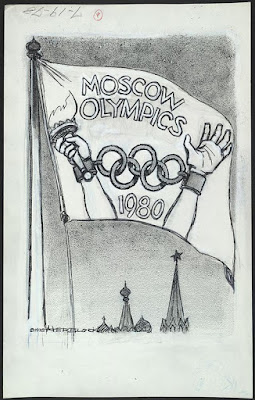An analysis of the last 100 years of political cartoons
While doing research on the political cartoons for the last one hundred years, I noticed that many of today's issues are the same as those from yesteryear--maybe with just a new label or spin. As an art, form the cartoon has become more sophisticated and sometimes darker. However, the sarcasm and free thought have never gone away.
I reviewed over 100 cartoons, which I can't possibly show here. It's a great way to learn history. As for the majority of the cartoons, I really don't have a strong opinion, looking at most of them in terms of history or current commentary.
Additionally, most of the pieces are copyrighted and I am using them under the fair use doctrine since I am attempting to teach the history of cartooning. If you wish to learn more about this topic, I would suggest going online and googling, "political cartoons." You can, as I did, be even more specific and enter the dates you wish to study.
The following is a cross-section of cartoons I thought were pertinent to the time. As you go through them, I'd like you to ask yourself a few questions:
- What are the symbols used by the artist? Does a big ship represent immigrants coming ashore or does it reflect the strength of a naval command?
- Is anything exaggerated (face, building, transport) and why? What's the artist trying to get across from the exaggeration?
- Does the title (label, caption) help you to understand the cartoon more clearly? Without the label, do you think you may have concluded something else?
- What style does the artist use: realism, comic, sketch or another? Do you like the style or would you have done something different?
- What medium does the cartoonist use: pencil, black ink, marker, watercolor, computer? What color(s)? What medium do you think works best?
- Do you think you could successfully draw cartoons? Have you ever tried? These works are obviously not like the Mona Lisa, but are more basic in style and approach, using symbols, exaggeration, irony, coupled with simple lines and good labeling.
- Why not try it? As I've always said, the best way to learn is through imitation. Take a cartoon that you like and change it to suit your own comment about life.
A step back further to Andrew Jackson: To the Victor Belongs the Spoils
I thought it was appropriate to begin this last part with Andrew Jackson, whose birthday we just celebrated in March and who appears to be a guiding light for our current president. Known as the "Indian hater" with his Trail of Tears, Jackson also instituted the spoiler system. As soon as he was in office he fired several federal employees, some of whom had been there since George Washington's days, and replaced them with his own friends (although not the best of choices, it would later be known).
Notice the symbols first of all. He's riding a fat pig perched up a base with skulls and money bags labelled bribery, fraud, spoils and plunder. There are dollar signs on his saddle and the pig. Wow, there's more to learn about Old Hickory than I ever knew.
That's what is neat about political cartoons, they do make you try to learn their meaning and a whole different history can be learned.
1890-1920 Gilded Age/Progressive Era
 |
The Bosses of Senate, created by Joseph Keppler from Puck (1889)
|
 |
| Fifty-first Congress (1889) was called Billion Dollar Congress and criticized for wasting taxpayer's money. |
 |
Andre Bowles, Puck Magazine
|
 |
| The Brains William Tweed, Tammany Hall Thomas Nast, Harper's Weekly 1871 |
 |
| Anti-trust Cartoon, by Thomas Nast c.1889 |
Muckrakers--reporters, cartoonist and authors who seek to point out the corruption of the time. First used by Teddy Roosevelt. Result was the Jungle and How the Other Half Lives.
 |
| Next! Fear of Standard Oil and it's tentacles reaching over the country. Puck 1904 |
 |
| by Clifford Berryman, Washington Star, 1912 Election |
Clifford Berryman (1869 – 1949)
 |
| 1917 Immigration Act Just another wall. |
1920 Evolution to Teapot Dome scandal
 |
| Anti-Catholic movement via KKK |
Theodor Seuss Geisel 1904-1991

1940s Although some very realistic drawing is appearing, the "comic" look is also taking hold.

Herbert Lawrence Block (1909-2001)
 |
| Herblock, 1963 |
 |
| Herblock |
 |
| Herblock 1967 |
 |
| Herblock 1968 |
1980-1990
 |
| 1981 |
Paul Francis Conrad (1924 – 2010)
 |
| Farm Crisis 1986 |
 |
| Steven Artley 1987 |
 |
| Gary Brookins, 1988 |
Contemporary Cartoons
 |
 |
| Adam Zyglis |
 |
| Jeff Danzier |
 |
| Walker Bragman |
 |
| Robert Ariail |
I hope you've enjoyed reading this series on political cartoons. So now let me ask you again, do you think you can draw a political cartoon from today's news. Try it. You might surprise yourself. Until next month, so long!
































